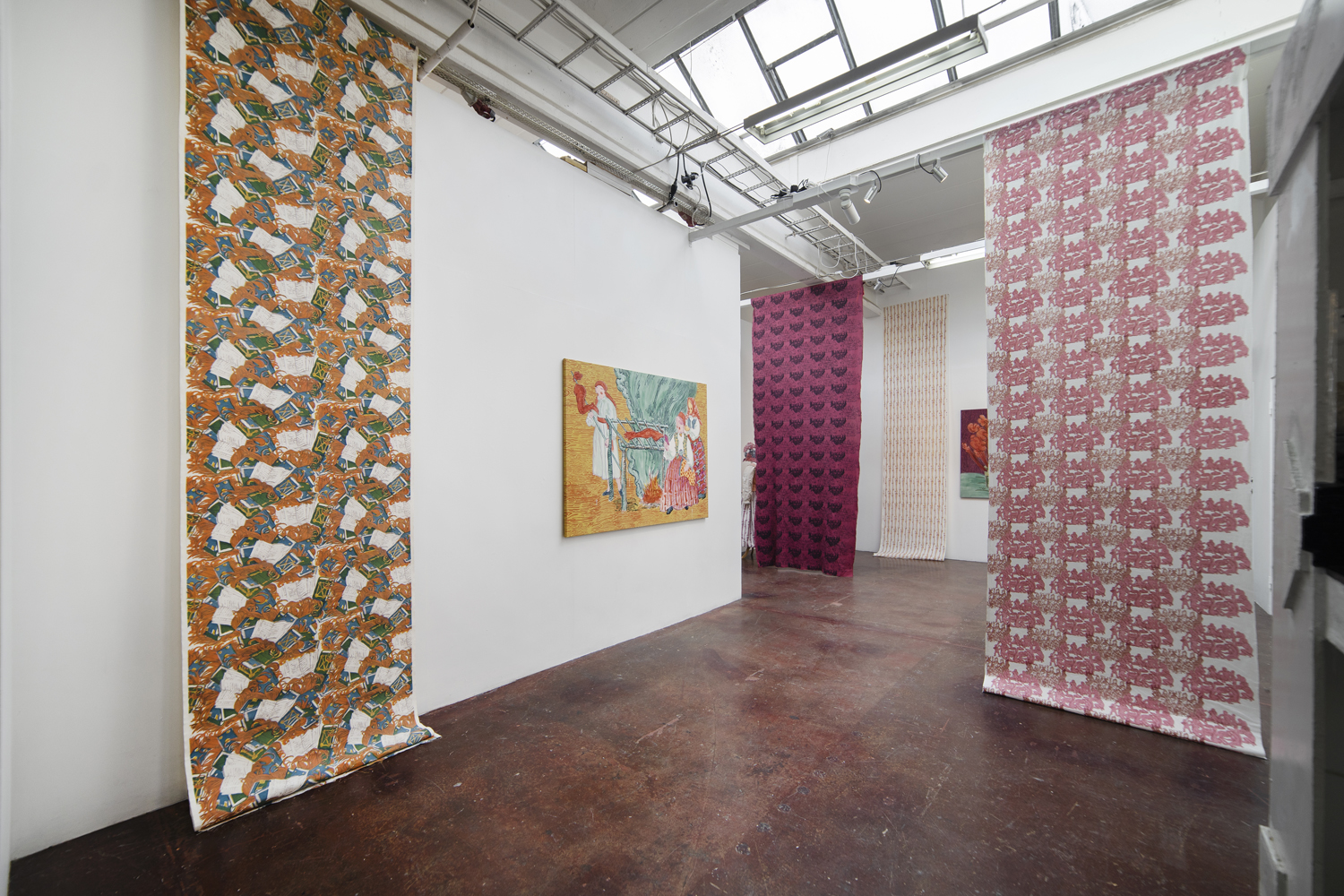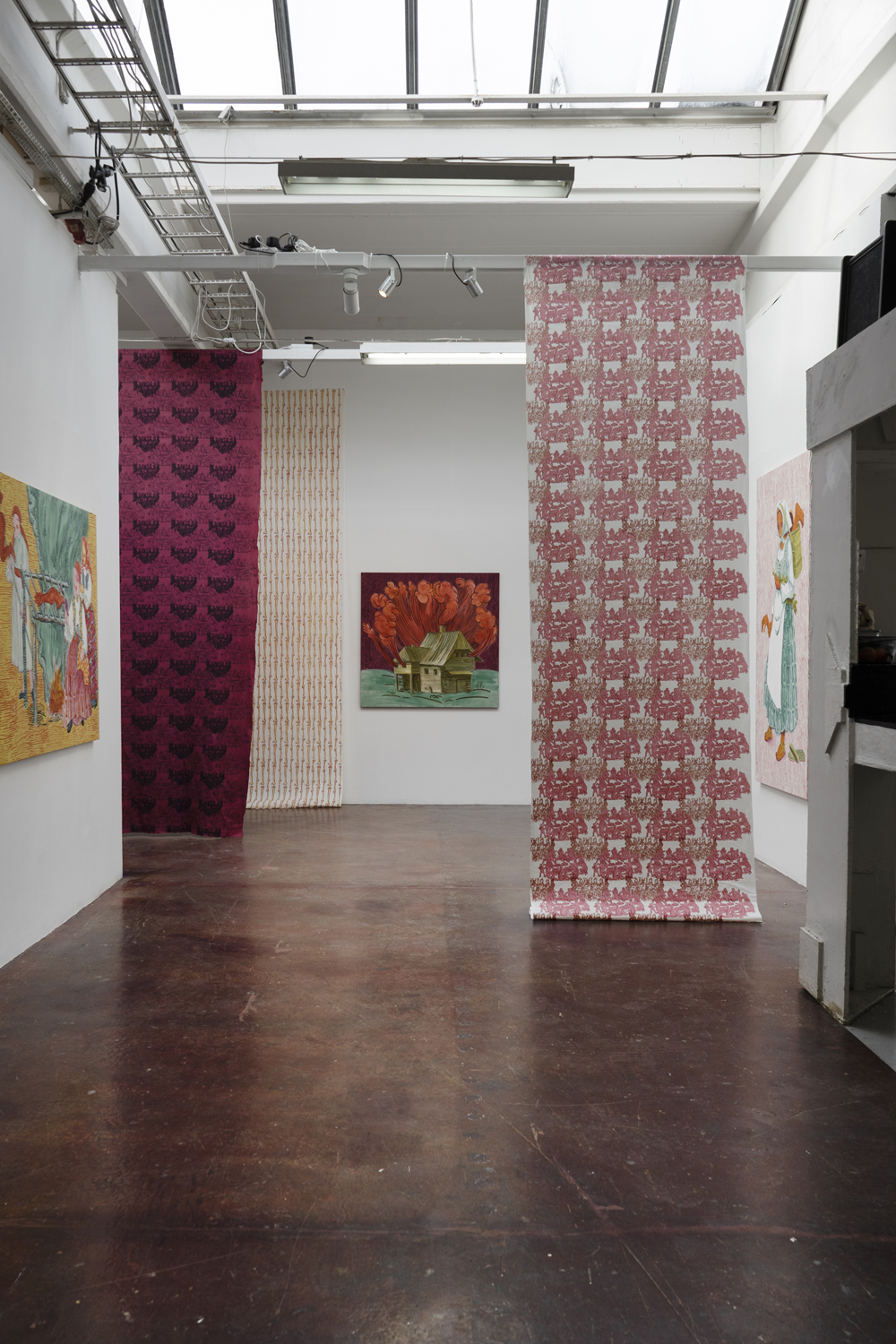Cannibal and Witch Eat the Rich




Scroll gallery below for more images ︎︎︎︎︎︎




This exhibition of paintings and printed textiles made
using earths and plant dyes, follows the colonial histories and stories of
resistance belonging to these materials. It took place at Celsius Projects, Malmö, in 2021. It was part of the final exam for
my PhD research project “The Peasant Paints: expanding painting
decolonially through planting and pigment-making” undertaken at Goldsmiths
College, University of London.
More information about the practice-based research can be found at www.thepeasantpaints.picturesMy thesis can be downloaded ︎︎︎here
More information about the practice-based research can be found at www.thepeasantpaints.picturesMy thesis can be downloaded ︎︎︎here
Printed calicos from India using
plant dyes and mordants on cotton fabric were a particularly popular commodity in Europe from the 17th century, until many countries
introduced import bans to support local industries during the 18th
century. These European calico printers appropriated the Indian techniques, and
used plant dyes from around the globe such as indigo from grown with enslaved
labour in the Americas, and later India, under the plantation system; and
brazilwood and logwood from the rainforests of Central and South America. These
patterned calicos formed an integral part of Swedish regional costumes in the
form of headscarves, aprons, and linings for bodices – thereby demonstrating
that the figure of the peasant that has been used to construct ideas of
nationhood in Scandinavia, was in fact implicated in global colonial forces.



Western colonialism and capitalism with its extractive
approach to plants as ‘natural resources’ served to suppress alternative ways
of relating with plant-beings both within Europe and outside Europe. As Silvia
Federici has argued in her book Caliban and the Witch, the Great Witch Hunts,
in particular, were a counter-revolutionary tool that served to supress radical
movements from the peasant class, and appropriate women’s reproductive
capacities by silencing their medicinal knowledge of plants. This tactic was
then exported to the Americas to suppress indigenous knowledge through
accusations of satanism and idolatry. The works in this exhibition use plant
pigments and dyes that have particularly resonant stories, such as Mayan blue –
a sacred pre-Colombian indigenous pigment made from indigo and attapulgite clay
that ceased to be made during the oppression of the colonial period and has
only recently been ‘re-discovered’ – and brazilwood, a tree which produces a
red dye, and which gave the country of Brazil its name.
The birth of the brazilwood trade in
the 16th century is a devastating example of bioprospecting which
exploited the Tupi Amerindians, who were depicted as savage cannibals by
Europeans and decimated the brazilwood trees leaving it endangered to this day. Meanwhile, in
Europe brazilwood was very much implicated in the disciplining of a new
proletariat. The displacement of peasants in the wake of agrarian capitalism
meant that many moved to urban centres and became beggars and vagrants. In response, the authorities in Amsterdam, set up a new form
of prison that used forced labour to discipline and reform these vagrants of
rural origin. In 1596 the Rasp- and Spinn- huis was established, and functioned
until 1815. Here, male inmates were set to work rasping brazilwood for the dye
and pigment industry, while women were forced to spin and weave textiles. This
model was eventually copied elsewhere in Europe, with rasp- and spinn- hus
being set up in Copenhagen, Stockholm, Gothenburg, and Norrköping during the
eighteenth century.
This exhibition imagined an alternative history with an alliance between the cannibal and the witch to eat the rich.
This exhibition imagined an alternative history with an alliance between the cannibal and the witch to eat the rich.